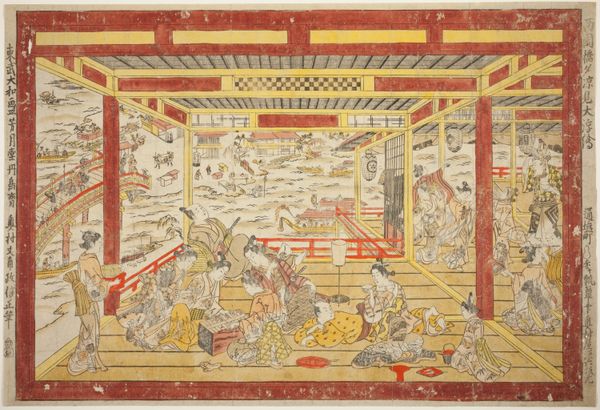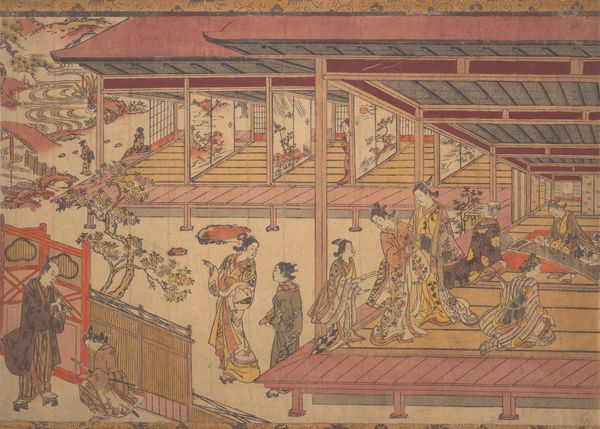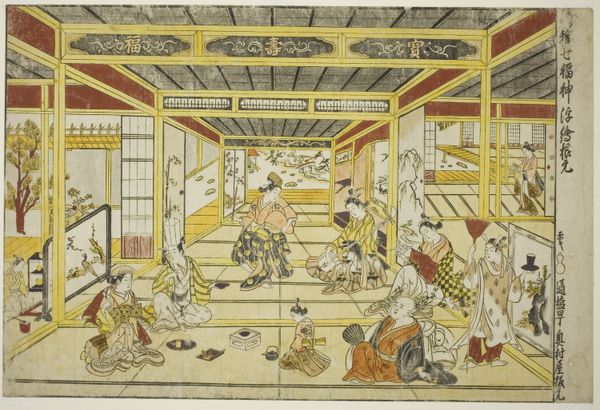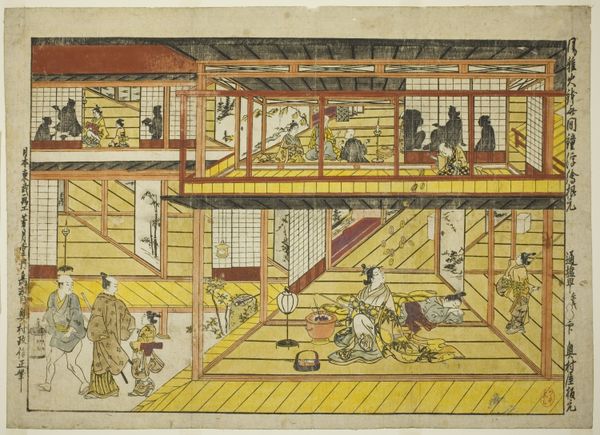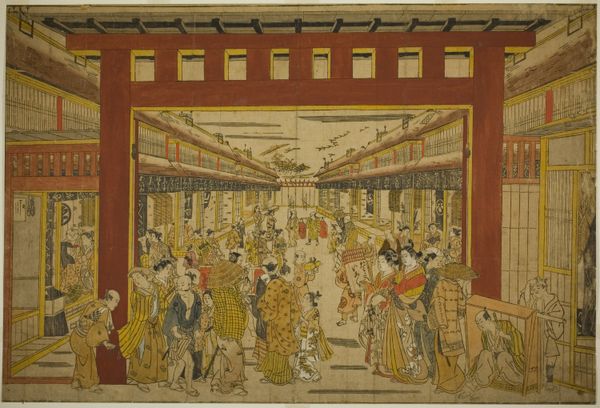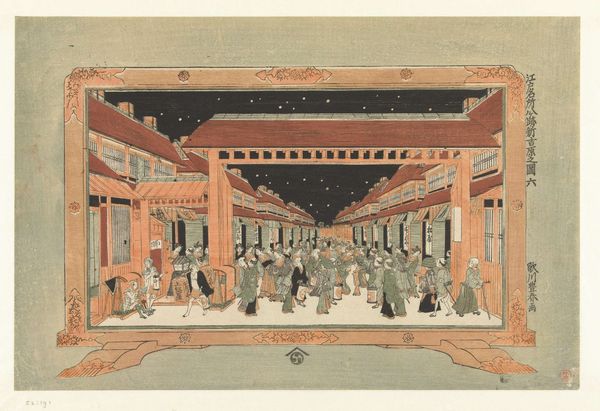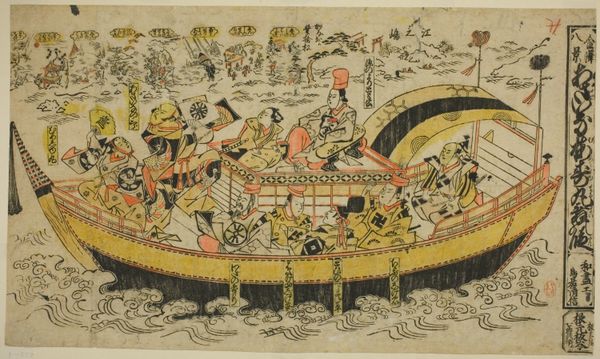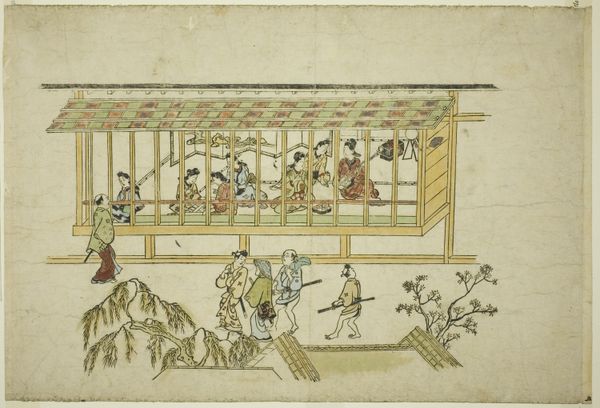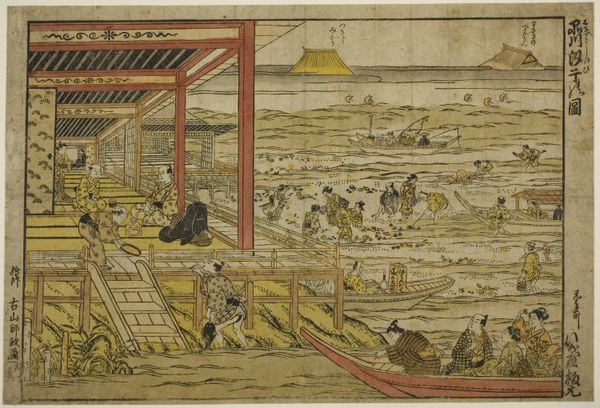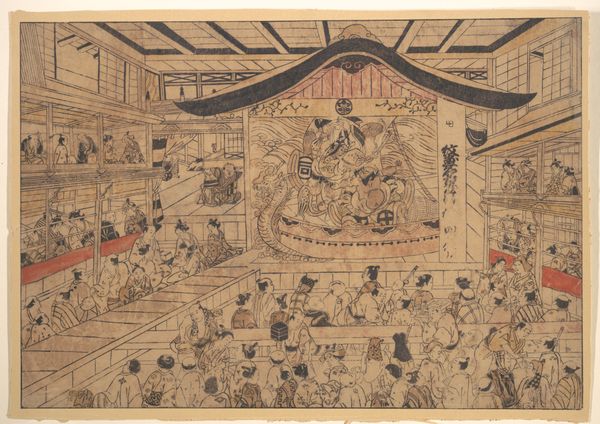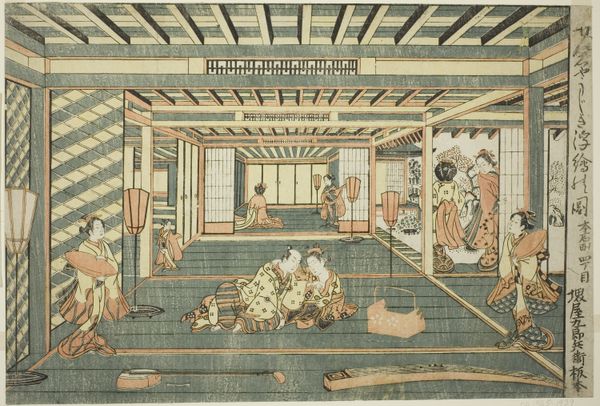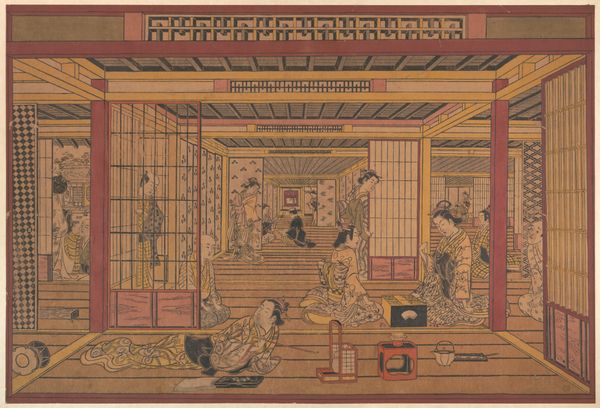
Large Perspective Picture of the Kaomise Performance on the Kabuki Stage (Shibai kyogen butai kaomise o uki-e) c. 1745
0:00
0:00
print, woodblock-print
# print
#
asian-art
#
ukiyo-e
#
perspective
#
woodblock-print
#
genre-painting
Dimensions: 46.8 × 68.0 cm (18 1/2 × 26 3/4 in.)
Copyright: Public Domain
Curator: Here we have Okumura Masanobu’s “Large Perspective Picture of the Kaomise Performance on the Kabuki Stage,” a woodblock print from around 1745. Quite the title, isn’t it? Editor: It's definitely descriptive. My first thought is just how crowded and energetic the space feels. The perspective lines draw you in, but there’s a sense of organized chaos, all those faces… Curator: The technique, Uki-e, literally "floating picture," was quite popular then, trying to capture Western perspective, something fairly new to Japanese art. What interests me is how it places Kabuki, this rising popular entertainment, right at the heart of Edo society. Editor: It's the sheer labor that strikes me. Look at the detail in each figure, the way the kimonos are patterned. Someone carved each line into those woodblocks, and then they were printed—multiplied! Mass production of imagery meant affordable access. Curator: Precisely! It democratized Kabuki, making it accessible beyond the aristocratic circles. These prints served as advertisements and souvenirs, shaping public perception of theatre culture. Editor: You know, I wonder about the pigments used. The red, especially; sourcing and preparing that color was undoubtedly complex. Red dyes, at that time, often signified status too... was this available to many, or restricted? The choice is surely symbolic as much as material. Curator: Good point. I also see this as a representation of public space—how it’s designed, populated, and ultimately, controlled. Notice the privileged viewing boxes up above versus the crowded floor. Editor: Right! It isn't only about who gets to consume art, but how different audiences experienced this Kabuki production due to class boundaries embedded within architectural and material choices. Curator: Yes, from that vantage point, considering production and reception, we gain a nuanced perspective on art's interplay with society at the time. Editor: Indeed, examining those elements brings a fresh and compelling view.
Comments
No comments
Be the first to comment and join the conversation on the ultimate creative platform.
